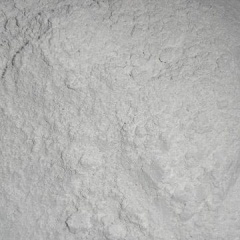Calcium carbonate
| Infobox on Calcium carbonate | |
|---|---|
| Example of Calcium carbonate |  |
| Facts | |
| Origin | - |
| Stowage factor (in m3/t) | - 1,78 m3/t (kegs) (Chalk limestone) - 1,34 m3/t (bags) preciptated |
| Humidity / moisture | - |
| Ventilation | - |
| Risk factors | See text |
Calcium carbonate
Contents
Description
Calcium carbonate is a chemical compound with the formula CaCO3. It is a common substance found in rocks in all parts of the world, and is the main component of shells of marine organisms, snails, coal balls, pearls, and eggshells. Calcium carbonate is the active ingredient in agricultural lime, and is created when Ca ions in hard water reacts with carbonate ions creating limescale.
The vast majority of calcium carbonate used in the industry is extracted by mining or quarrying. Pure calcium carbonate (e.g. for food or pharmaceutical use), can be produced from a pure quarried source (usually marble).
Alternatively, calcium carbonate is prepared from calcium oxide. Water is added to create calcium hydroxide, and carbon dioxide is passed through this solution to precipitate the desired calcium carbonate, referred to in the industry as precipitated calcium carbonate (PCC).
Calcium carbonate; a white powder or colourless crystals, tasteless, decomposes at 825°C, non combustible, very slightly soluble in water (a few ppm), soluble in acids with evolution of carbon dioxide.











